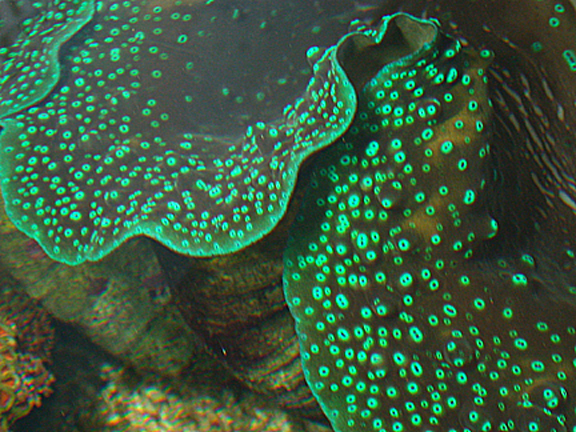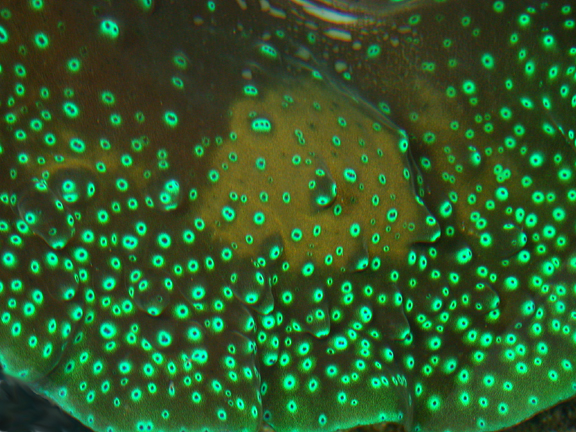This clam is remarkably effective at capturing the attention of students studying animal diversity in general biology and invertebrate zoology! This is not the largest individual of this species, but this species is the largest bivalve in the world.
Giant clams have symbiotic algae in their mantles that provide them with up to 90% of their energy (the brown background color of the mantle comes from these algae, which are brown).
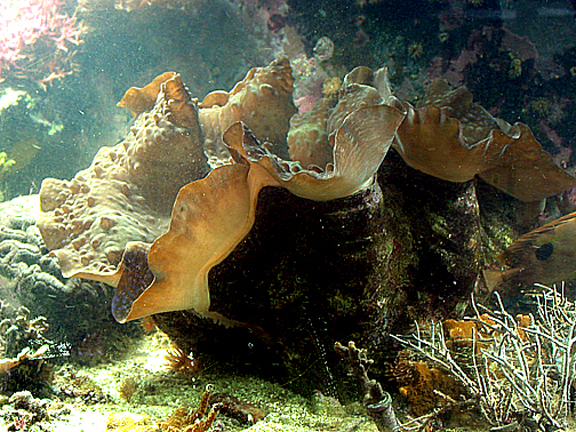
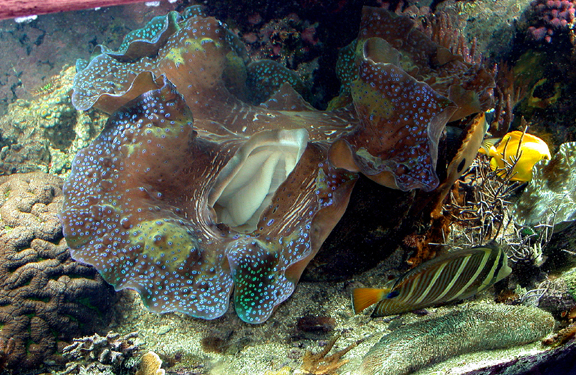
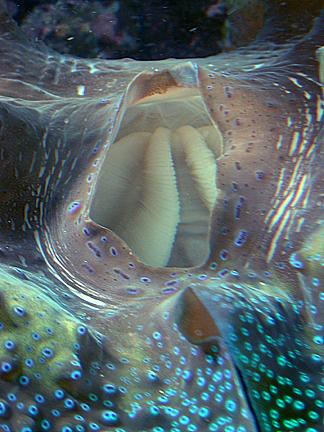
The gills of this clam are clearly visible through its incurrent siphon
